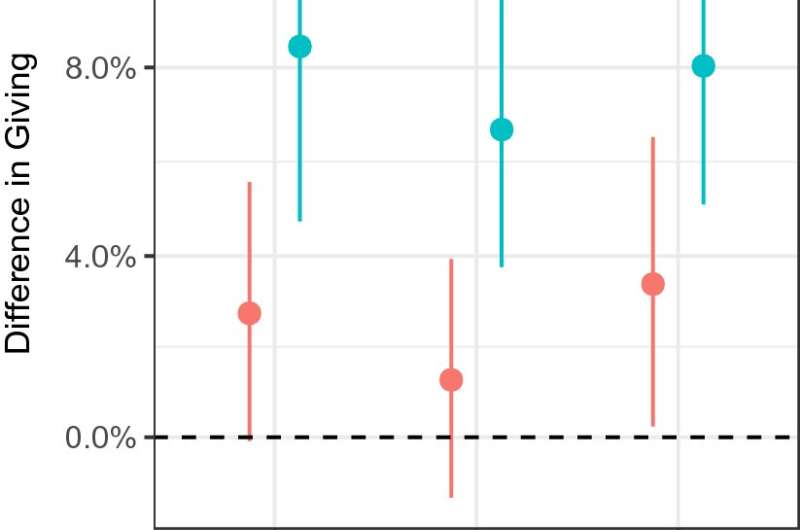When experiencing the threat of COVID-19, people became more generous

Individuals in the U.S. showed greater financial generosity when under threat from COVID-19, according to new research published in Scientific Reports.
During major crises, such as war, pandemics, or natural disasters, people have been found to either display increased selfishness or greater generosity. Selfish behaviors may derive from fear and self-preservation, and early stages of the COVID-19 pandemic saw examples of selfish behavior such as stockpiling. Crises may also lead to an increased sense of community and social cohesion, which can promote more generous behaviors known as "catastrophe compassion."
Ariel Fridman and colleagues examined the relationship between the presence of threat from COVID-19 and generosity using two longitudinal datasets. The first dataset, from charity evaluator Charity Navigator, provided data on 696,942 charitable donations between July 2016 and December 2020 in the U.S. The data included the amount donated and which county the donor lived in. The second dataset involved 1,003 US participants playing a game where an individual assigned the role of dictator decides how to distribute $10 between themselves and a randomly chosen partner. The game was played on six occasions from March 2020 until August 2020. COVID-19 threat was calculated based on daily deaths by county.
Across both datasets, the authors observed increased generosity when there was a threat from COVID-19. 78% of counties with COVID-19 threat increased the total amount donated in March 2020 compared to March 2019. Counties that did not face COVID-19 threat increased giving by 55% over the same time period. Similar results were seen in April 2020 compared to April 2019. On average, county-level giving increased by 31.6% under low threat, 28.5% under medium threat, and 32.9% under high threat, compared to no threat. Repeat donors were significantly more likely to donate to human services charities.
In the dictator game, donation increased (relative to a mean allocation of $2.92) by $0.25 (8.6%) under low threat, $0.38 (13.1%) under medium threat, and $0.24 (8.3%) under high threat compared to no threat. The authors note that, while the presence of COVID-19 threat was associated with increased generosity overall, the level of threat made little difference to donations.
The authors conclude that these findings add to our understanding of human behavior during a crisis, and may represent a silver lining in contrast to the tragedy of the pandemic.
More information: Ariel Fridman et al, Increased generosity under COVID-19 threat, Scientific Reports (2022). DOI: 10.1038/s41598-022-08748-2
Journal information: Scientific Reports
Provided by Nature Publishing Group




















